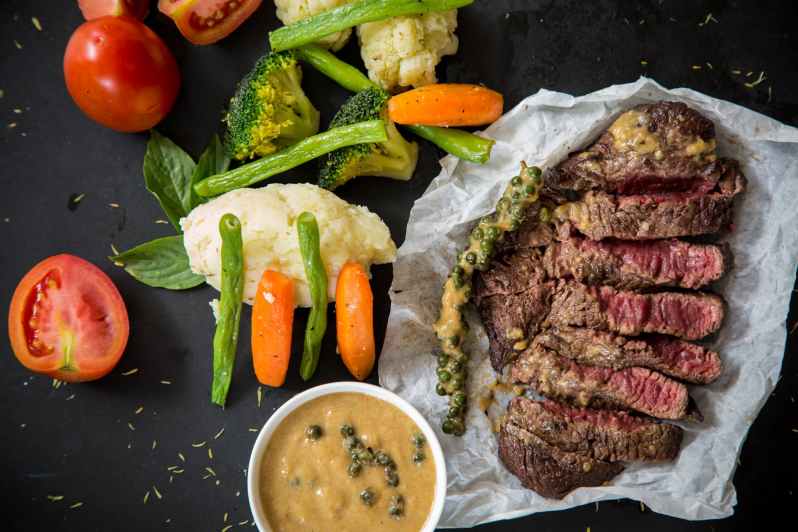
How would you feel if you could lose more weight and feel satiated simultaneously? Deprivation or extreme techniques aren’t necessary for a fitter, healthier you—the secret lies in the types of foods and the ratio of macronutrients that you consume. Unlocking the best macros for weight loss can help you slim down while feeling full and energized.

What are macros?
Macros, or macronutrients, are the building blocks of the human body. We depend on them for the energy needed to perform the required daily activities. There are three macronutrients: proteins, carbohydrates, and fats. For optimal health, you must consume the proper amounts of each of these food groups. Maintaining a healthy weight, supporting the immune system, and optimizing energy levels can be accomplished by eating a balanced diet that includes the right macronutrients to lose weight.

How can tracking macros lead to weight loss?
Learning how to count macros doesn’t have to be complicated. Unlocking the secret to weight loss isn’t just about counting calories; it’s about understanding and optimizing your macros. A micronutrient tracking program can provide the key to shedding those extra pounds. Monitoring your macros ensures a well-balanced diet and empowers you to make healthier food choices, resulting in sustained weight loss.
It is through this increased awareness of the nutritional content of your meals that you can make more informed decisions, resulting in a change in your eating habits with the adoption of healthy food choices. The data you collect becomes your guide, allowing you to identify trends over time and pinpoint areas that may require adjustment. What is the result of all this? With an efficient and customized strategy, you will be able to achieve your weight loss goals more efficiently and effectively, all supported by the invaluable insights derived from tracking your nutritional journey.

The best macronutrient ratio for weight loss
The best macronutrient ratio for weight loss depends on many factors. Your age, gender, physical activity level, and overall health all play a role in determining the best macronutrient ratio for weight loss. This ratio should be tailored to your specific needs and preferences. For this reason, it is best to consult a nutritionist or healthcare professional about your health goals. Use this macro calculator to determine what macronutrient ratio is right for you.
The cornerstone of achieving and maintaining a healthy weight is a balanced diet that contains lean proteins, complex carbohydrates, and healthy fats. Remember to add regular exercises to your diet plan as well. Regular exercise boosts your body’s ability to burn calories, which contributes to your success in maintaining a healthy weight.
Protein
Protein is one of the best macros for weight loss as it keeps you full longer, which is important for slimming down. Aim for a daily intake of 0.36 to 0.45 grams of protein per pound of body weight. Include sources like lean meats, poultry, fish, eggs, and plant-based options such as beans and tofu. These not only fuel your muscles but also keep you feeling full, curbing those between-meal cravings.
Fat
Contrary to popular belief, fats can help you lose weight, provided that you are eating them from healthy foods. It is important to consume healthy fats, such as those present in avocados, nuts, seeds, and olive oil. Aim for 20-35% of your daily calorie intake to come from healthy fats. These fats are not only delicious but also crucial for nutrient absorption and supporting overall well-being.
Carbohydrates
Carbohydrates are the body’s primary energy source and play a crucial role in your weight loss journey. Opt for complex carbohydrates like whole grains, fruits, and vegetables, steering clear of refined sugars. Around 45-65% of your daily calories should come from carbohydrates, ensuring sustained energy levels.

Which method is easiest for calculating and tracking macronutrients?
The world of macronutrient tracking doesn’t have to be daunting; it can be a seamless part of your routine with the right methods. Embrace meal prep as your ally, planning and preparing your meals in advance to have a clear picture of your nutritional intake. Weighing food and portions ensures accuracy—invest in a reliable kitchen scale to make this process hassle-free.
Explore the plethora of online tools and apps designed to calculate macros for weight loss, which can simplify the task by providing comprehensive nutritional information and digital tracking. With these resources and tips at your disposal, calculating and tracking your macronutrients becomes not only efficient but also an empowering aspect of your wellness journey. It’s important to set realistic goals and track your progress regularly. Celebrate your successes, and use them to motivate yourself to keep going. Finally, remember to stay flexible and adjust your goals as needed.
Ultimately, unlocking the secrets of macronutrients is the key to a successful weight loss journey. By understanding and optimizing your protein, fats, and carbohydrates in alignment with your unique needs and employing practical tracking methods, you empower yourself to achieve sustainable and enjoyable results on the path to a healthier, happier you. These strategies can help you identify the best foods for your body and tailor them to fit your lifestyle and goals. With consistency and dedication, you can make lasting changes to your health and overall well-being.
Editors' Recommendations
- High protein fast food for a busy day: These picks won’t kill your fitness goals
- Weight training tips: This is what — and when — you should be eating
- What foods are high in iron? These staples will help you live a healthier life
- 7 delicious, portable, high-protein snacks that will support your weight loss goals
- Is olive oil good for you? All about this healthy fat (and how to use it in your kitchen)



